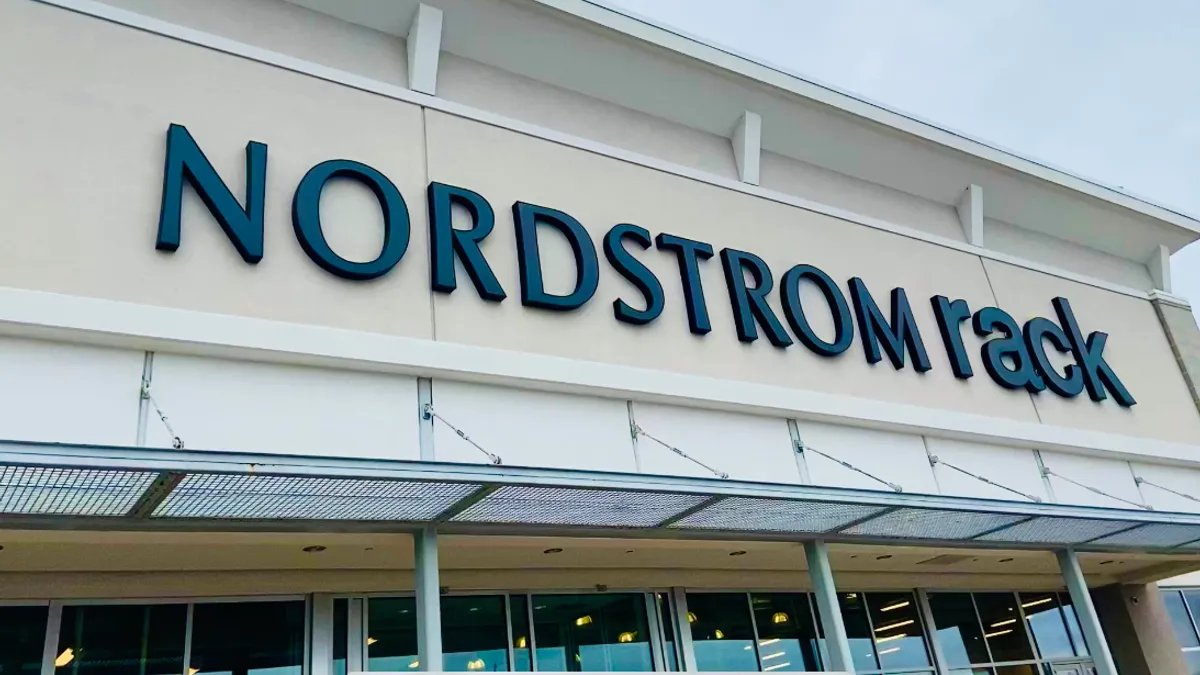Every aspect of retail is getting hit by the pandemic, and marketing is no exception. As retailers have temporarily shuttered store locations, cut down on growth plans, furloughed employees and considered skipping on rent, marketing budgets have also been thrown onto the chopping block.
Marketing executives aren't being caught entirely off-guard by the cuts. A Gartner report on early impacts from the pandemic highlighted that 65% of CMOs are preparing for budget cuts, while a study by Advertiser Perceptions found 77% of marketing and advertising executives are already expecting the coronavirus outbreak could impact ad spending through Q1 of 2021.
That being said, no one was expecting these types of cuts prior to the pandemic. Ewan McIntyre, vice president, analyst at Gartner for Marketers, said that prior research from the firm about 2020 budgets showed, "there was no sense that people anticipated that there would be some kind of budget challenge." Of course, no executive could have predicted a pandemic, but what that means now is that many marketers are left ill-prepared, he noted.
Marketing was already the most likely function to receive a budget cut greater than 10% heading into 2020, McIntyre said, and depending on the retailer, that's likely to be higher now.
"That actually seems relatively tame in comparison to some of the conversations that I've been having with some marketing leaders right now," McIntyre said, noting that marketers should "plan for significantly worse" than 10%.
Unquantified cuts to marketing spend have already been announced by Tapestry, Best Buy, The RealReal, Capri Holdings and Chico's, while Kohl's, Kirkland's and At Home are "significantly" reducing costs in the area. RH, formerly Restoration Hardware, announced $50 million in "advertising savings." (The company's total advertising expenses in fiscal 2019 amounted to $108 million.)
"I am seeing across the board, firstly, some real pressure coming from the CFO to cut marketing first," McIntyre added. "And that is inevitably the situation that we always see: Marketing gets cut first and hardest."
Cutting close to the bone
Marketing is notorious for getting hit by budget cuts, and according to McIntyre, Gartner has found the CFO to be the largest inhibitor of marketing. But these days are also far from business as usual. Retailers are pulling on all kinds of levers to keep their heads above water and even previous bright spots are struggling under the unprecedented conditions.
When retailers are forced with trying to trim everywhere at once, marketing is sometimes simply the easiest thing to cut down on.
"I can't cut payroll. I can't cut leases. I can't cut these other things as easily as I can cut marketing budgets," said Karthik Easwar, associate teaching professor of marketing at Georgetown.
"It's not that revenue is coming in less: It's not coming in."

Barbara Kahn
Professor of Marketing at the Wharton School at the University of Pennsylvania
That's especially true of small businesses, which operate without the financial flexibility of their larger peers and therefore face even more challenges during this crisis. Easwar said they are likely "cutting it as close to the bone as possible" while larger retailers may be able to weather the pandemic without entirely slashing marketing budgets by cutting costs elsewhere, or even re-distributing the salaries of executives who are taking pay cuts.
"Someone working in a small business doesn't have that luxury," Easwar said of CEOs giving up their salaries. "They have to keep their money."
At the same time, though, it's arguably never been more important for brands to be keeping in touch with their customers, whether it be to inform them of limited services or just to stay top of mind during a time when most stores are shuttered. There lies the rub: Marketing budgets are being slashed at a time when marketing is becoming more important.
It's easy to understand why, at a time like this. Marketing makes up millions or sometimes billions of dollars in a company's expenses per year. For a few retailers that have announced budget cuts so far, it's upwards of $500 million. It's something that doesn't pay the bills at a moment where most retailers have entered survival mode, noted Barbara Kahn, a professor of marketing at the University of Pennsylvania's Wharton School.
"These are very difficult times," Kahn said. "It's not that revenue is coming in less — it's not coming in. The stores are closed. That really suggests much more extreme measures and what you're talking about, one could argue is a luxury in better times."
Retailers that are cutting marketing budgets due to COVID-19 and their latest marketing spend
| Retailer | Latest marketing spend |
|---|---|
| Kohl's | $1 billion |
| Best Buy | $840 million |
| PVH | $510 million |
| Tapestry | $247 million |
| Capri Holdings | $158 million |
| RH | $108 million |
| Chico's FAS | $103 million |
| The RealReal | $48 million |
| At Home | $35 million |
| Kirkland's | $15 million |
Source: Data is pulled from the retailer's latest annual report.
For the moment, that means — at least for retailers who can afford to maintain some kind of marketing budget — that the costliest parts get cut first. That may vary from retailer to retailer: maybe it's social media spend or a planned TV ad campaign, but Easwar noted that for a lot of businesses it means giving up on investing in growth.
Signing that new brand ambassador goes out the window, while finding low-cost ways like email to stay in touch with consumers come to the forefront. McIntyre said many companies are prioritizing cutting their paid media and agency budgets over technology and labor costs, as the former make up a combined 48% of retail marketing budgets. While that saves some jobs in the near-term, it puts retailers in a tough position once normal retail operations resume.
"The challenge obviously is that we will come out of this particular crisis at some point," McIntyre said, warning against slashing those budgets entirely if possible. "If the V shape of the cut is too deep, it's going to be very difficult to come out of the other side of this with the share of voice and front-of-mind awareness with consumers once they're ready to start spending again."
Agencies also offer a range of capabilities and skills that in-house teams may not be able to effectively replicate.
McIntyre stressed the need for marketing professionals to plan for worst-case scenario budget cuts, have a prioritized list of initiatives and be prepared to make arguments about the economic value of marketing.
"There's also the perception as well that, frankly, marketing is a variable cost. And we know that it isn't," he added. "You can't just turn things on and off as easily as perhaps colleagues in finance think that you can."
Clever spending
For those able to allocate some funds to marketing, the focus becomes how to talk to a customer that's not leaving the house often, not going to stores and potentially not interested in buying your product right now. Of course, this varies category by category: Groceries are not falling out of anyone's purchase behavior right now, but more discretionary purchases are.
As a result, communication channels like email and Twitter may get more attention, while social media advertising or influencer marketing may be areas to cut back on for some retailers.
"If it's a luxury lifestyle product, then yeah, we're done," Reid Greenberg, executive vice president of digital and e-commerce at Kantar, said of influencer marketing. "We're not going to spend any money because nobody's going to buy it no matter how loudly we yell. But if it's a product that's going to make my self-isolation or shelter-in-place better and more convenient and help me get through it, then yeah."
Shifts in consumer behavior can also be a guideline for how retail marketers should adjust their messaging, Greenberg said, with many retailers moving to messages of hope or of "safe consumerism" in recent weeks.
"In a time of crisis, it's not wise to duck and run. It's important to be loud."

Reid Greenberg
Executive Vice President of Digital and E-commerce for Kantar
He cited a recent Kantar study, which found 59% of 18 to 34 year olds said they were eating healthier and making healthier lifestyle choices during the coronavirus outbreak, while 48% were exercising more regularly and 44% were focused on personal development. Other data from the company indicated that consumers also expect companies to support hospitals during the pandemic.
"In a time of crisis, it's not wise to duck and run," he said. "It's important to be loud."
But brands also have to be loud in a way that's relevant to consumers. To that end, Wayfair postponed its April sales holiday, Way Day, while Amazon is reportedly doing the same with Prime Day, which usually takes place in July. Footwear company Caleres also noted that it is "postponing certain marketing activities" in light of the pandemic.
Loyalty programs have fallen into this bucket as well, with some retailers, like Sears, extending the expiration date of points-based programs so that customers aren't punished for not spending while stores are shuttered. While we will likely see more of this, Easwar cautioned against making snap decisions on some of these things.
"Everybody wants to know on day two, 'What's going to happen to my loyalty points and my status and all these other things that are going on?' But to do it in a way that is viable for the firm and best for the customer might take more than two days of thought," he said.
For other retailers, being relevant means refocusing advertising to highlight products they sell that are useful during the pandemic, including comfort apparel and work-from-home items. Not everyone is able to do that, though.
Easwar noted that he's seen a lot of businesses re-aligning merchandise and advertising to better suit the times, but those that don't have as easy of a pivot can also do a lot just by being transparent with consumers about what services they can and can't offer right now, and what they're doing to make it through the crisis and keep customers satisfied.
McIntyre added that retailers can also communicate what they're doing for their employees as well, which can make customers more flexible about orders and also create positive feelings.
"I think a lot of consumers are understanding that this is a challenge for everyone — the customer and the company — and are willing to, in good faith, be flexible and believe that the company is doing its best," Easwar said.
Even with minor solutions to some of retail marketing's current problems, the industry remains largely in the dark about how long the coronavirus pandemic will last, and how long it will impact one of their greatest assets: stores. Consumer behavior could change again before this is through, and perhaps more worryingly for marketers, this round of initial budget cuts may prove to be an alarm bell rather than the finishing blow.
"I think the challenge is that, as this progresses, we might see this death by a thousand cuts as well," McIntyre said. "It may start with the 10% expected budget cuts, and we may see further cuts coming down the line."






















